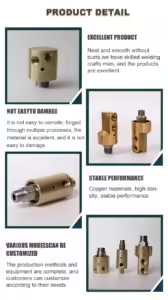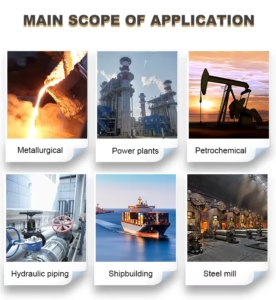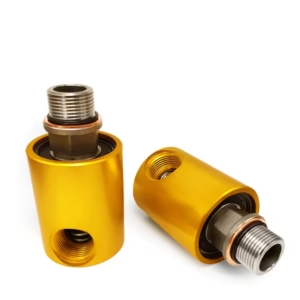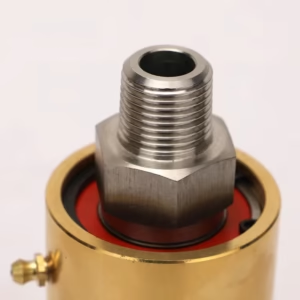Two-Way Connector Rotary Coupling Water Rotary Union for Water
Original price was: $30.00.$26.00Current price is: $26.00.
- Product name: Water rotary joints
- Material: Stainless Steel Brass
- Pipe Clamp Size: 10/15</li><li><strong>Max.Speed: 1000RPM
- Max. Pressure: 1.6MPa
- Max.Temperature: 100℃
- Applicable Medium: Water, Water heating
Description
Rotary Coupling Water Rotary Union Overview
A Rotary Coupling Water Rotary Union is a specialized mechanical device designed to transfer water or water-based fluids between stationary and rotating parts of machinery. A Two-Way Connector Rotary Coupling Water Rotary Union is a mechanical device designed to facilitate the transfer of water (or other compatible fluids) between stationary and rotating components in industrial, commercial, or residential systems. It ensures a reliable and leak-free connection, enabling continuous fluid flow while one part of the union rotates and the other remains stationary. This type of rotary union is commonly used in various industrial applications where fluid transfer under rotation is necessary.



| Feature | Two-Way Connector | Single-Passage Union |
|---|---|---|
| Flow Direction | Bidirectional | Unidirectional |
| Complexity | Multi-channel design | Single-channel design |
| Applications | Cooling, irrigation, CIP | Hydraulics, steam transfer |
| Cost | Higher (dual engineering) | Lower |
Technical Specifications
Flow Configuration
Dual-flow (two-way) design enables concurrent supply and return of fluids.
Pressure Capacity
Typically supports pressures up to 10 bar (145 psi), suitable for standard industrial applications.
Temperature Range
Operates effectively within a temperature range of -30°C to 120°C, accommodating various thermal requirements.
Rotational Speed
Capable of handling rotational speeds up to 3,500 rpm, depending on the specific model and application.
Seal Materials
Utilizes high-quality seals such as carbon graphite, silicon carbide (SiC), or tungsten carbide (WC) to ensure leak-free operation and durability.
Housing Materials
Constructed from robust materials like stainless steel, brass, or carbon steel to withstand demanding industrial environments.
Connection Types
Available with various connection options, including threaded (BSP, NPT), flanged, and quick-release configurations, to suit different installation requirements.
Key Features of Rotary Coupling Water rotary union
1. Bidirectional Rotation Capability
Unlike single-directionaliona joints, these unions support continuous rotation in both clockwise and counterclockwise directions, eliminating torque buildup and hose twisting. This flexibility is critical for machinery like conveyors, turntables, or rotating washing systems, where unrestricted movement is essential.
Ensures smooth operation even under high-speed rotation, maintaining consistent fluid pressure and flow rate.
2. Leak-Proof Sealing Technology
Features advanced sealing mechanisms (e.g., graphite, PTFE, or rubber seals) designed to withstand water pressure variations, preventing leaks even in high-pressure environments (typically up to 100 bar / 1,450 PSI).
Reduces fluid waste, minimizes downtime for maintenance, and enhances safety by avoiding environmental spills or slippery workspaces.
3. Durable Construction for Harsh Environments
Built with corrosion-resistant materials such as stainless steel (304/316), brass, or nickel-plated alloys, ensuring longevity in wet, acidic, or chemically aggressive settings.lHigh-quality bearings (ball or roller bearings) reduce friction, minimizing wear and tear even after years of continuous use.
4. Multi-Passage Design for Complex Systems
Many models offer dual or multi-fluid passages, allowing simultaneous transfer of water and other media (e.g., air, coolant, or lubricants) through separate channels.
Simplifies system integration in applications requiring multiple fluid inputs/outputs, such as car wash turntables, agricultural irrigation booms, or industrial mixing tanks.
5. Easy Installation & Low Maintenance
Compact design with standardized thread sizes (NPT, BSP, metric) ensures quick installation onto existing pipelines.
Maintenance-friendly features like replaceable seals and accessible bearing assemblies reduce downtime, lowering total cost of ownership (TCO).
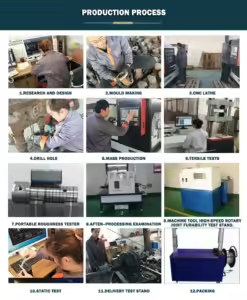
Applications of the Two-Way Connector rotary coupling for water
Industrial Cooling Systems
Used in manufacturing environments to circulate cooling water through rotating machinery such as CNC machines or hydraulic presses.
Heating Systems
Facilitates the transfer of heated water or thermal oil in systems requiring precise temperature control, such as textile drying cylinders or chemical reactors.
Food and Beverage Processing
Ensures hygienic water transfer for cleaning or cooling processes in compliance with industry standards.
Agricultural Irrigation Systems
Integral to pivot irrigation systems, enabling reliable water delivery to rotating arms across large fields.
Energy Production
Supports fluid circulation in renewable energy applications like wind turbines for cooling generators or hydraulic systems.
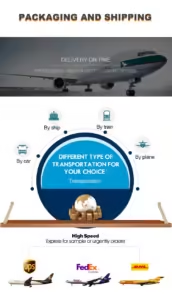


FAQ of rotary coupling water rotary union
What is a Rotary Coupling Water Rotary Union?
It is a mechanical device that allows the transfer of fluids, such as water, from a stationary source to a rotating part of machinery. It consists of two main components: a stationary member connected to inlet pipes and a rotating component that connects to rotating equipment.
What types of fluids can Rotary Unions handle?
Rotary Unions can handle fluids such as water, steam, oil and even abrasive liquids. This versatility makes them suitable for numerous industrial applications.
How do Rotary Unions prevent leaks?
Rotary Unions designed with advanced sealing technologies that keep the fluid contained while preventing contaminants from entering. The seals specifically chosen based on the type of fluid transferred, pressure levels, and operational conditions.
What are the differences between Monoflow and Duoflow Rotary Unions?
Monoflow Rotary Unions have a single passage allowing fluid to flow in one direction.
Duoflow Rotary Unions contain two passages, permitting fluid to flow in and out.
What materials used in the construction of Rotary Unions?
Rotary Unions typically constructed from high-grade materials such as stainless steel or brass. Ensuring durability and resistance to corrosion under various operational conditions.
What industries benefit most from using Rotary Coupling Water Rotary Unions?
Industries that significantly benefit from these devices include manufacturing, food processing, textiles, automotive, aerospace, and energy sectors due to their need for efficient fluid transfer.
What advancements have been made in Rotary Union technology?
Recent advancements include improved sealing technologies for better leak prevention. Enhanced materials for higher temperature and pressure tolerances and integration with electrical slip rings for simultaneous data.






